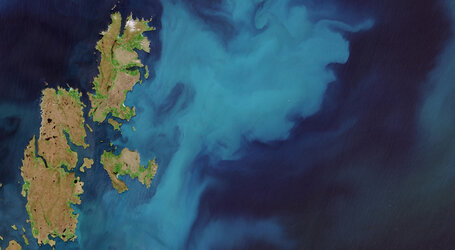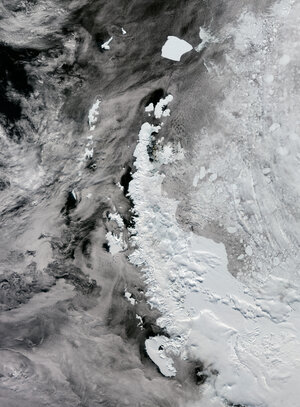Accept all cookies Accept only essential cookies See our Cookie Notice

About ESA
The European Space Agency (ESA) is Europe’s gateway to space. Its mission is to shape the development of Europe’s space capability and ensure that investment in space continues to deliver benefits to the citizens of Europe and the world.
Highlights
ESA - United space in Europe
This is ESA ESA facts Member States & Cooperating States Funding Director General Top management For Member State Delegations European vision European Space Policy ESA & EU Space Councils Responsibility & Sustainability Annual Report Calendar of meetings Corporate newsEstablishments & sites
ESA Headquarters ESA ESTEC ESA ESOC ESA ESRIN ESA EAC ESA ESAC Europe's Spaceport ESA ESEC ESA ECSAT Brussels Office Washington OfficeWorking with ESA
Business with ESA ESA Commercialisation Gateway Law at ESA Careers Cyber resilience at ESA IT at ESA Newsroom Partnerships Merchandising Licence Education Open Space Innovation Platform Integrity and Reporting Administrative Tribunal Health and SafetyMore about ESA
History ESA Historical Archives Exhibitions Publications Art & Culture ESA Merchandise Kids Diversity ESA Brand Centre ESA ChampionsLatest
Space in Member States
Find out more about space activities in our 23 Member States, and understand how ESA works together with their national agencies, institutions and organisations.
Science & Exploration
Exploring our Solar System and unlocking the secrets of the Universe
Go to topicAstronauts
Missions
Juice Euclid Webb Solar Orbiter BepiColombo Gaia ExoMars Cheops Exoplanet missions More missionsActivities
International Space Station Orion service module Gateway Concordia Caves & Pangaea BenefitsLatest
Space Safety
Protecting life and infrastructure on Earth and in orbit
Go to topicAsteroids
Asteroids and Planetary Defence Asteroid danger explained Flyeye telescope: asteroid detection Hera mission: asteroid deflection Near-Earth Object Coordination CentreSpace junk
About space debris Space debris by the numbers Space Environment Report In space refuelling, refurbishing and removingSafety from space
Clean Space ecodesign Zero Debris Technologies Space for Earth Supporting Sustainable DevelopmentLatest
Applications
Using space to benefit citizens and meet future challenges on Earth
Go to topicObserving the Earth
Observing the Earth Future EO Copernicus Meteorology Space for our climate Satellite missionsCommercialisation
ESA Commercialisation Gateway Open Space Innovation Platform Business Incubation ESA Space SolutionsLatest
Enabling & Support
Making space accessible and developing the technologies for the future
Go to topicBuilding missions
Space Engineering and Technology Test centre Laboratories Concurrent Design Facility Preparing for the future Shaping the Future Discovery and Preparation Advanced Concepts TeamSpace transportation
Space Transportation Ariane Vega Space Rider Future space transportation Boost! Europe's Spaceport Launches from Europe's Spaceport from 2012Latest
Shetland Islands
Thank you for liking
You have already liked this page, you can only like it once!
The Shetland Islands, an archipelago in the Northern Isles of Scotland, are featured in this Copernicus Sentinel-2 image.
Zoom in to see this image at its full 10 m resolution or click on the circles to learn more about the features in it.
Lying roughly 100 km north of the Scottish mainland, the Shetland Islands separate the Atlantic Ocean on the west from the North Sea to the east. The archipelago comprises around 100 islands and islets, with fewer than 20 of them inhabited. The islands cover an area of around 1468 sq km and have a rugged coastline approximately 2700 sq km long.
The largest island, known as the Mainland, has an area of around 900 sq km, making it the third-largest Scottish island. The next largest are Yell, Unst and Fetlar, which lie in the north, as well as Bressay and Whalsay, which lie to the east. Lerwick, located on Mainland, is the capital and largest settlement of the archipelago.
The most striking feature in this week’s image, captured on 1 July 2021, is the vivid, turquoise-coloured bloom visible to the east of the islands. This type of bloom is slightly different to the harmful cyanobacteria often visible around the Baltic Sea. In the absence of any known samples being analysed, it is assumed that it is a coccolithophore bloom – a type of microscopic marine algae living in the upper layer of the sea. Like all phytoplankton, coccolithophores contain chlorophyll and have the tendency to multiply rapidly near the surface.
In large numbers, coccolithophores periodically shed their tiny scales called ‘coccoliths’ into the surrounding waters. These calcium-rich coccoliths turn the normally dark water a bright, milky-turquoise colour. Although invisible to the eye, in large quantities, they are easy to spot in satellite imagery. These types of algae play a huge role in the ocean uptake of atmospheric carbon dioxide, as their shells sink to deeper ocean depths after they die, storing carbon in the process.
This year’s edition of the United Nations climate change conference – COP26 – is taking place in Scotland from 31 October to 12 November. The summit aims to inspire faster and more ambitious action from the international community to achieve the goal of limiting global temperature rise to 1.5°C. As in previous years, ESA has a strong presence at COP26, showcasing how satellite data strengthens our understanding of climate from space. Read more about ESA’s role at COP.
This image is also featured on the Earth from Space video programme.
-
CREDIT
contains modified Copernicus Sentinel data (2021), processed by ESA -
LICENCE
CC BY-SA 3.0 IGO or ESA Standard Licence
(content can be used under either licence)

Shetland bloom

Earth from Space: Shetland Islands

North Frisian Islands

Antarctic Peninsula and South Shetlands Islands















 Germany
Germany
 Austria
Austria
 Belgium
Belgium
 Denmark
Denmark
 Spain
Spain
 Estonia
Estonia
 Finland
Finland
 France
France
 Greece
Greece
 Hungary
Hungary
 Ireland
Ireland
 Italy
Italy
 Luxembourg
Luxembourg
 Norway
Norway
 The Netherlands
The Netherlands
 Poland
Poland
 Portugal
Portugal
 Czechia
Czechia
 Romania
Romania
 United Kingdom
United Kingdom
 Slovenia
Slovenia
 Sweden
Sweden
 Switzerland
Switzerland

























